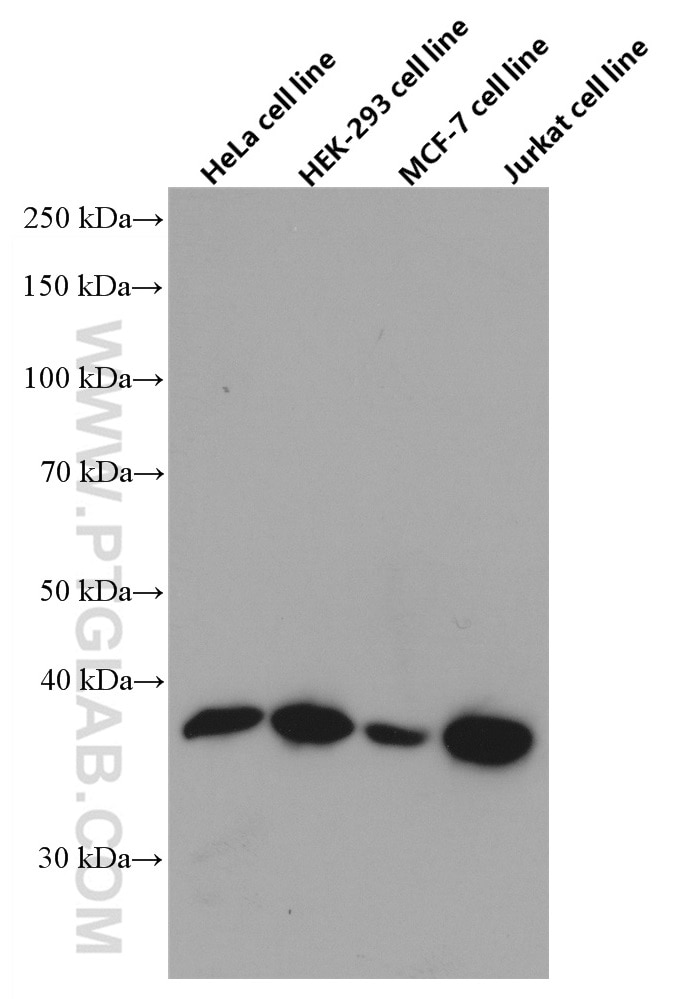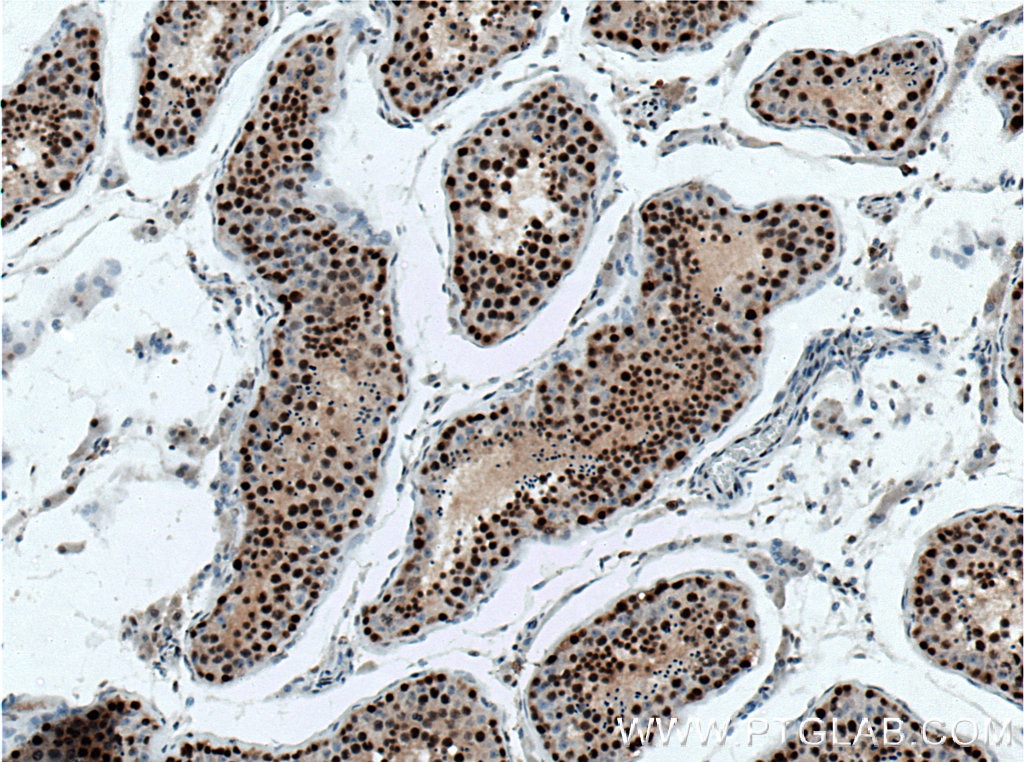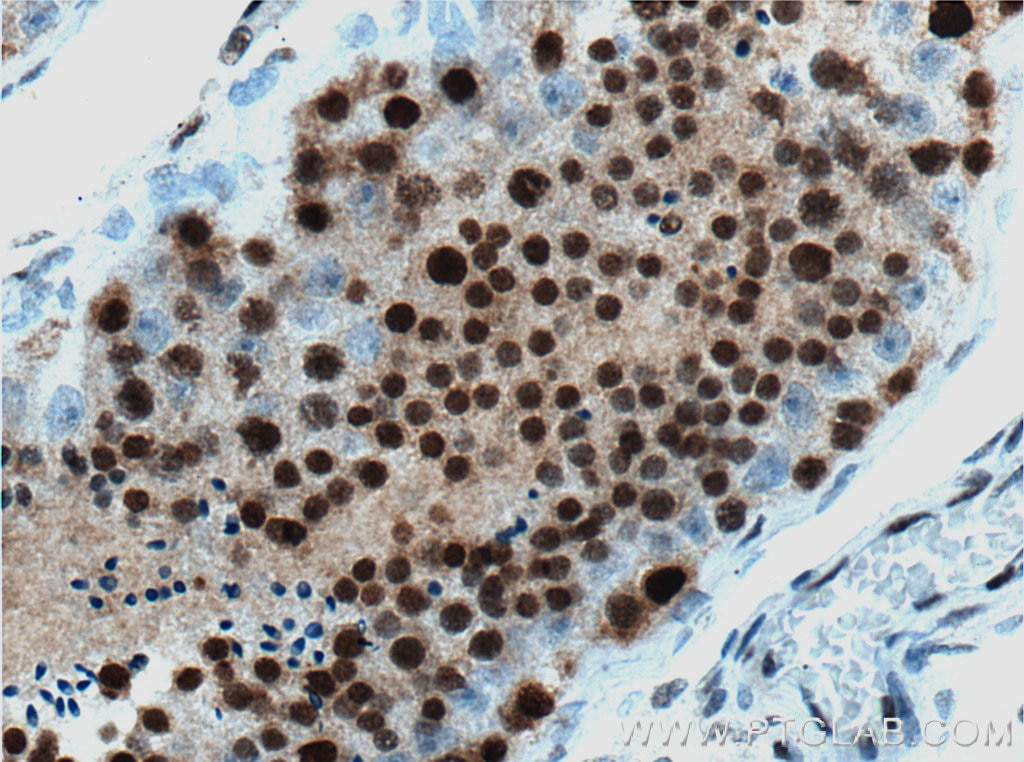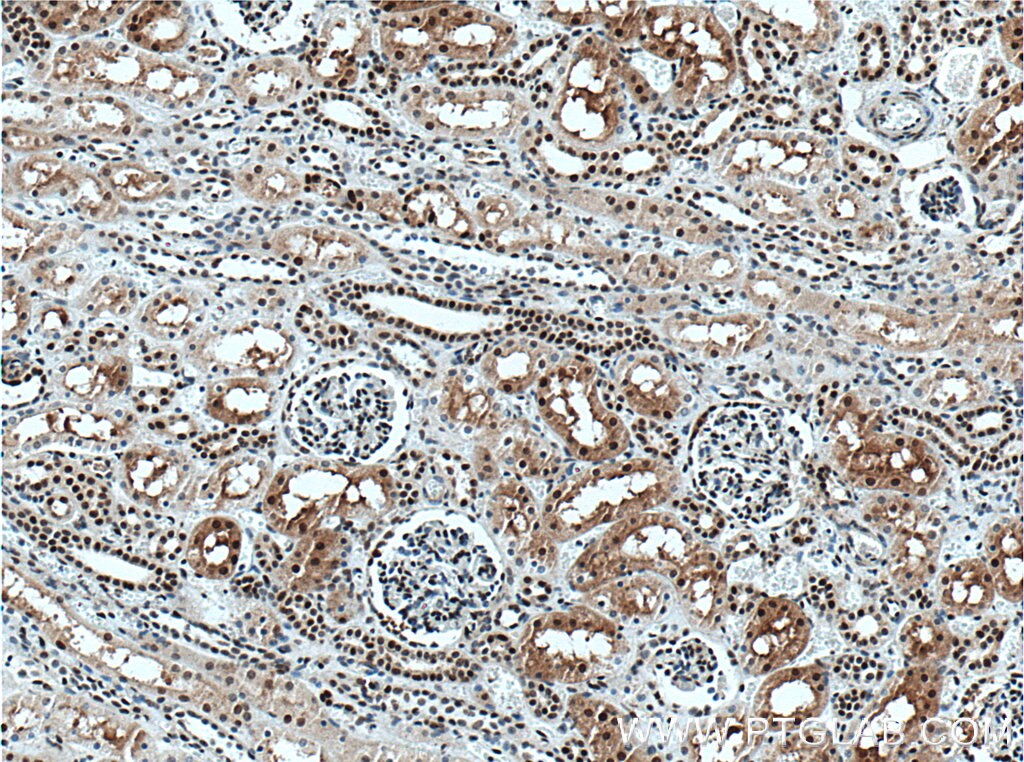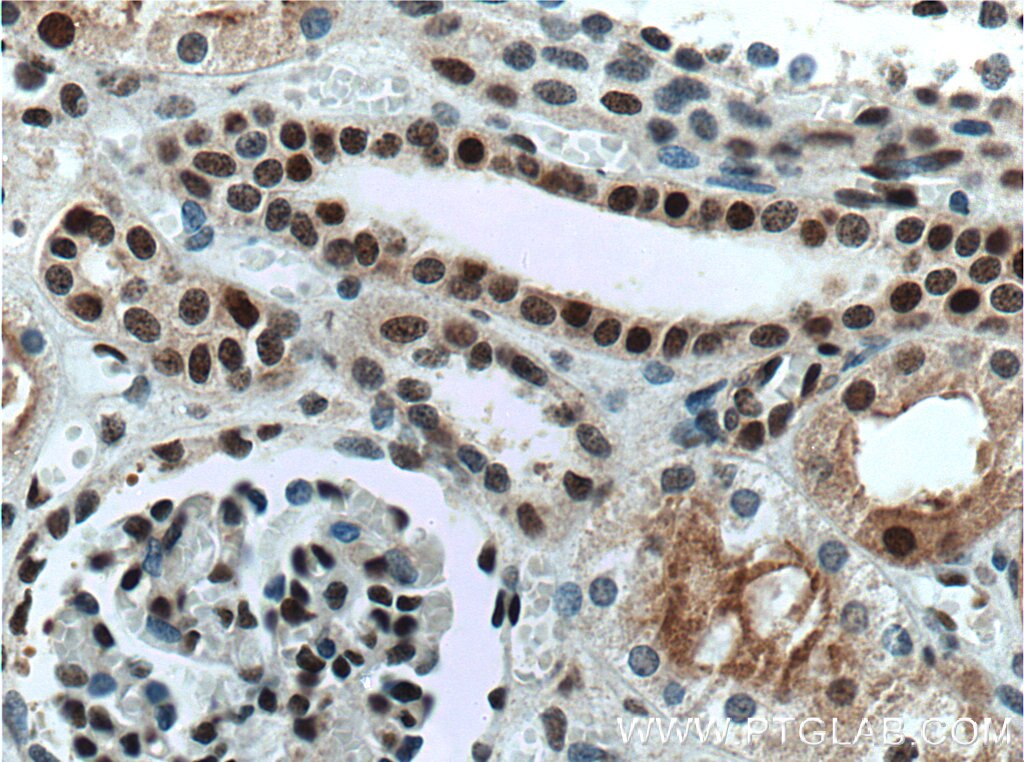Anticorps Monoclonal anti-XLF
XLF Monoclonal Antibody for WB, IHC, ELISA
Hôte / Isotype
Mouse / IgG2b
Réactivité testée
Humain
Applications
WB, IHC, ELISA
Conjugaison
Non conjugué
CloneNo.
1F8C7
N° de cat : 66552-1-Ig
Synonymes
Galerie de données de validation
Applications testées
| Résultats positifs en WB | cellules HeLa, cellules HEK-293, cellules Jurkat, cellules MCF-7 |
| Résultats positifs en IHC | tissu testiculaire humain, tissu rénal humain il est suggéré de démasquer l'antigène avec un tampon de TE buffer pH 9.0; (*) À défaut, 'le démasquage de l'antigène peut être 'effectué avec un tampon citrate pH 6,0. |
Dilution recommandée
| Application | Dilution |
|---|---|
| Western Blot (WB) | WB : 1:5000-30000 |
| Immunohistochimie (IHC) | IHC : 1:500-1:2000 |
| It is recommended that this reagent should be titrated in each testing system to obtain optimal results. | |
| Sample-dependent, check data in validation data gallery | |
Informations sur le produit
66552-1-Ig cible XLF dans les applications de WB, IHC, ELISA et montre une réactivité avec des échantillons Humain
| Réactivité | Humain |
| Hôte / Isotype | Mouse / IgG2b |
| Clonalité | Monoclonal |
| Type | Anticorps |
| Immunogène | XLF Protéine recombinante Ag2496 |
| Nom complet | nonhomologous end-joining factor 1 |
| Masse moléculaire calculée | 35 kDa |
| Poids moléculaire observé | 37 kDa |
| Numéro d’acquisition GenBank | BC030986 |
| Symbole du gène | XLF |
| Identification du gène (NCBI) | 79840 |
| Conjugaison | Non conjugué |
| Forme | Liquide |
| Méthode de purification | Purification par protéine A |
| Tampon de stockage | PBS with 0.02% sodium azide and 50% glycerol |
| Conditions de stockage | Stocker à -20°C. Stable pendant un an après l'expédition. L'aliquotage n'est pas nécessaire pour le stockage à -20oC Les 20ul contiennent 0,1% de BSA. |
Informations générales
XRCC4-like factor (XLF), also known as Cernunnos and NHEJ1, is a protein encoded by the human NHEJ1 gene and an important repair factor for DNA double-strand breaks. NHEJ is a well-known mechanism for the repair of double-strand breaks (DSBs), a lethal type of DNA damage in mammalian cells. It basically utilizes a group of enzymes to take hold of the ends of a broken DNA molecule, create a bridge between them, and subsequently re-ligate the broken DNA molecule.
Protocole
| Product Specific Protocols | |
|---|---|
| WB protocol for XLF antibody 66552-1-Ig | Download protocol |
| IHC protocol for XLF antibody 66552-1-Ig | Download protocol |
| Standard Protocols | |
|---|---|
| Click here to view our Standard Protocols |
